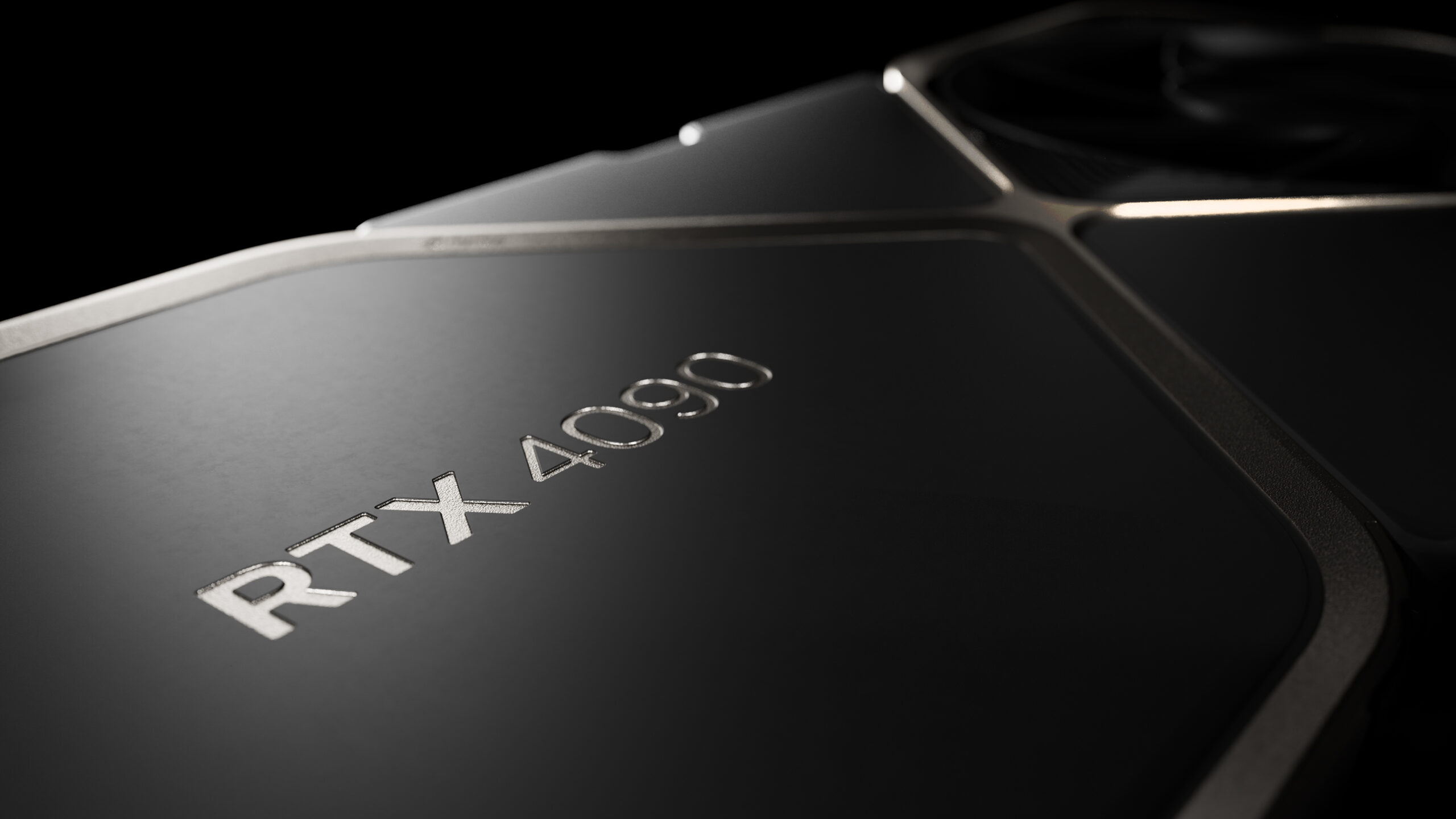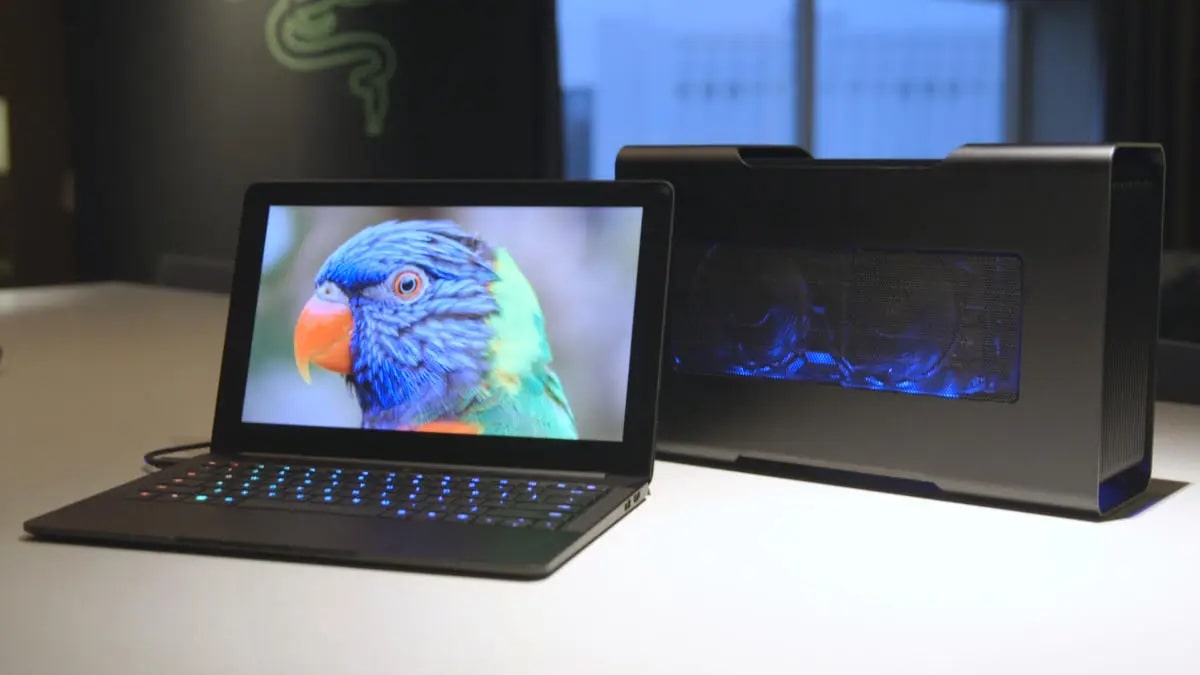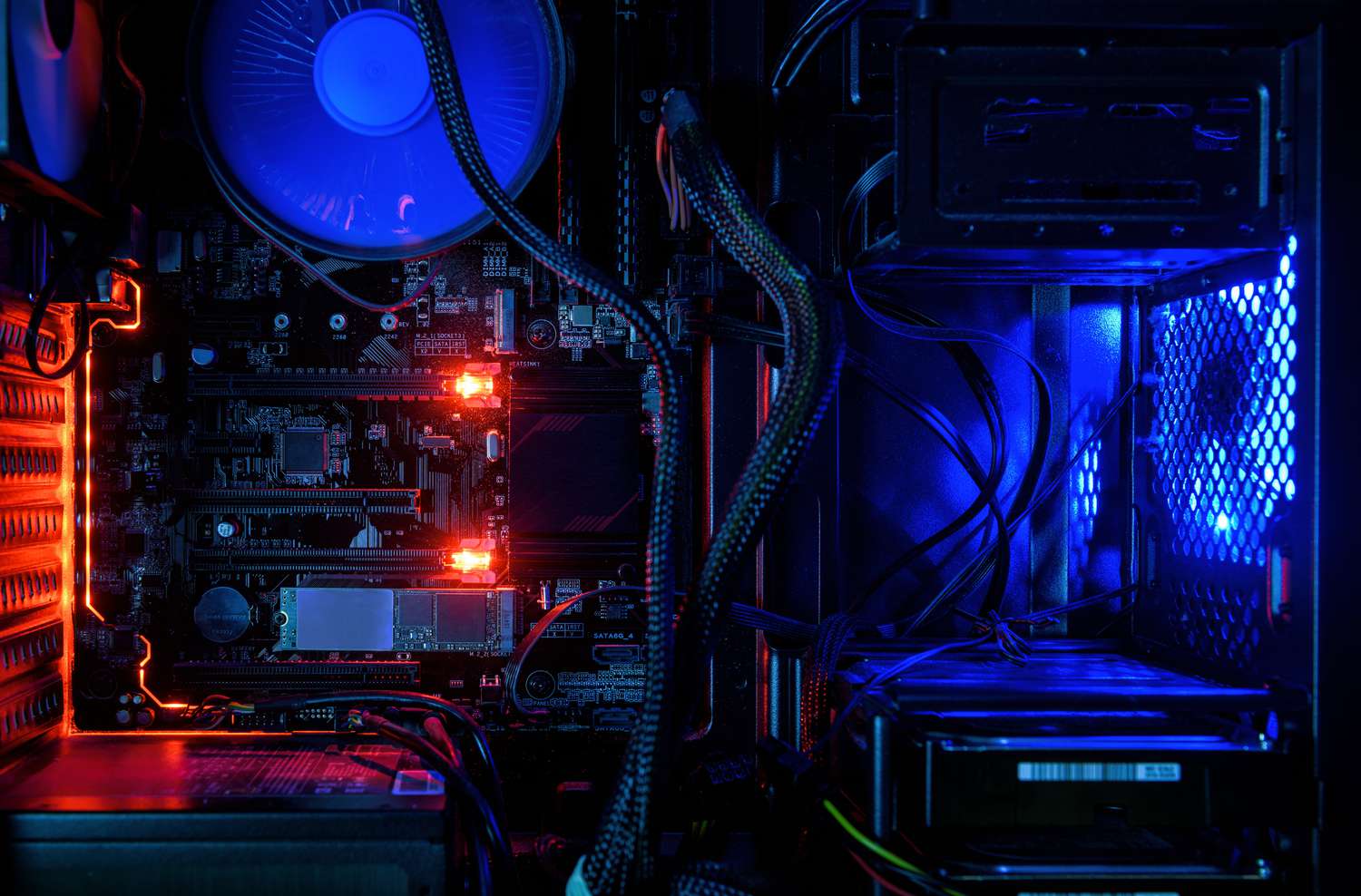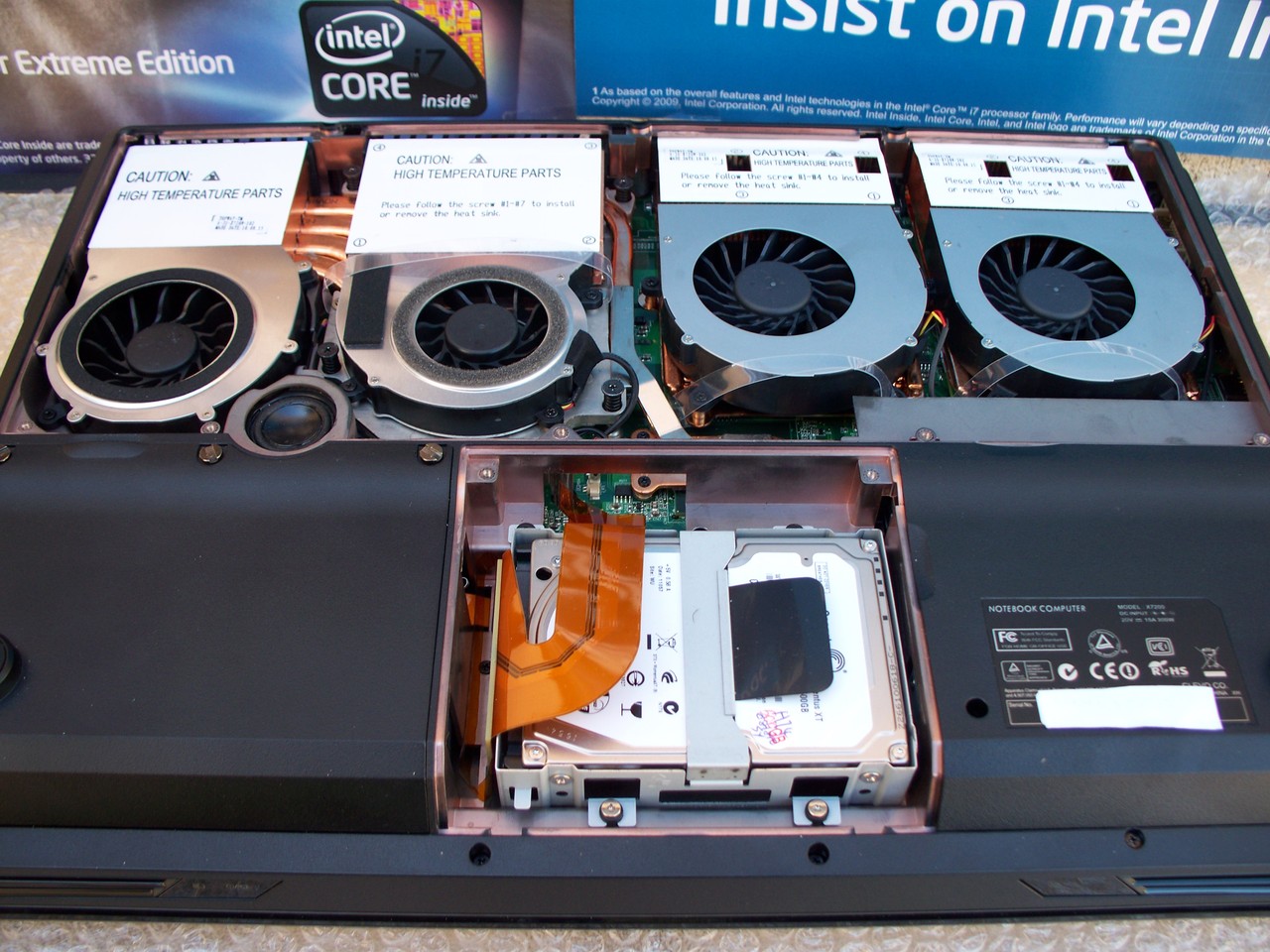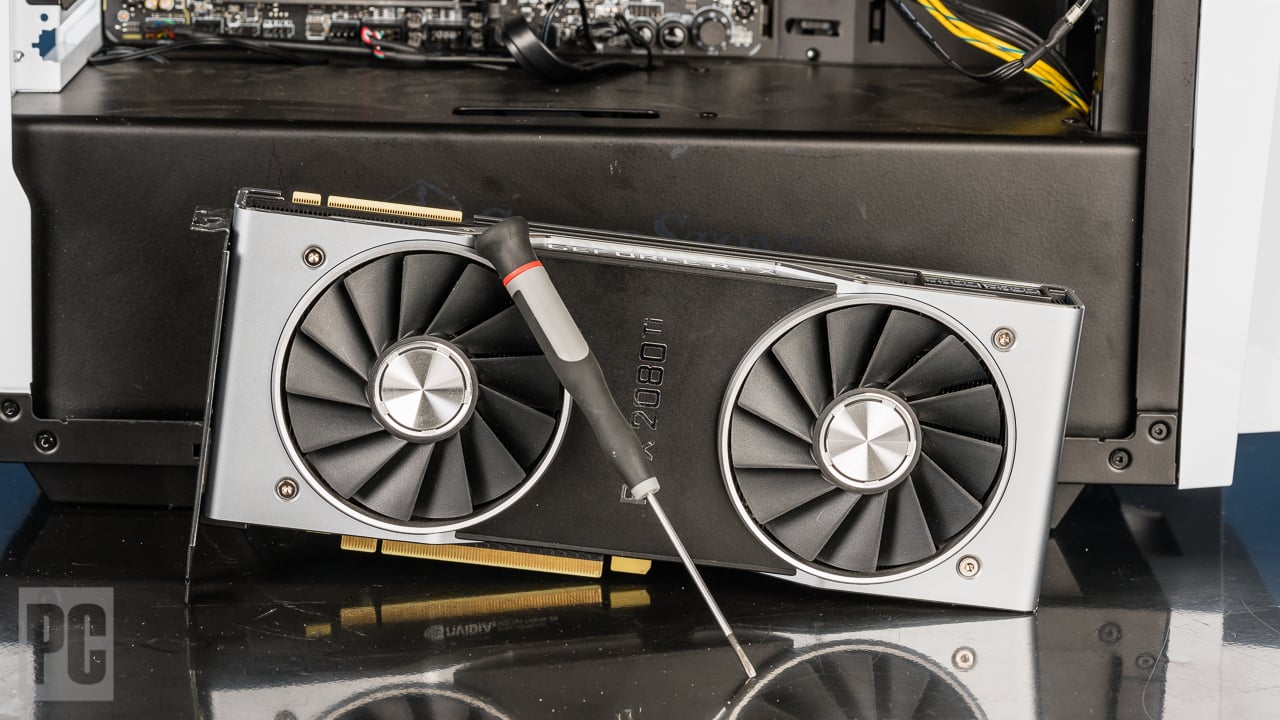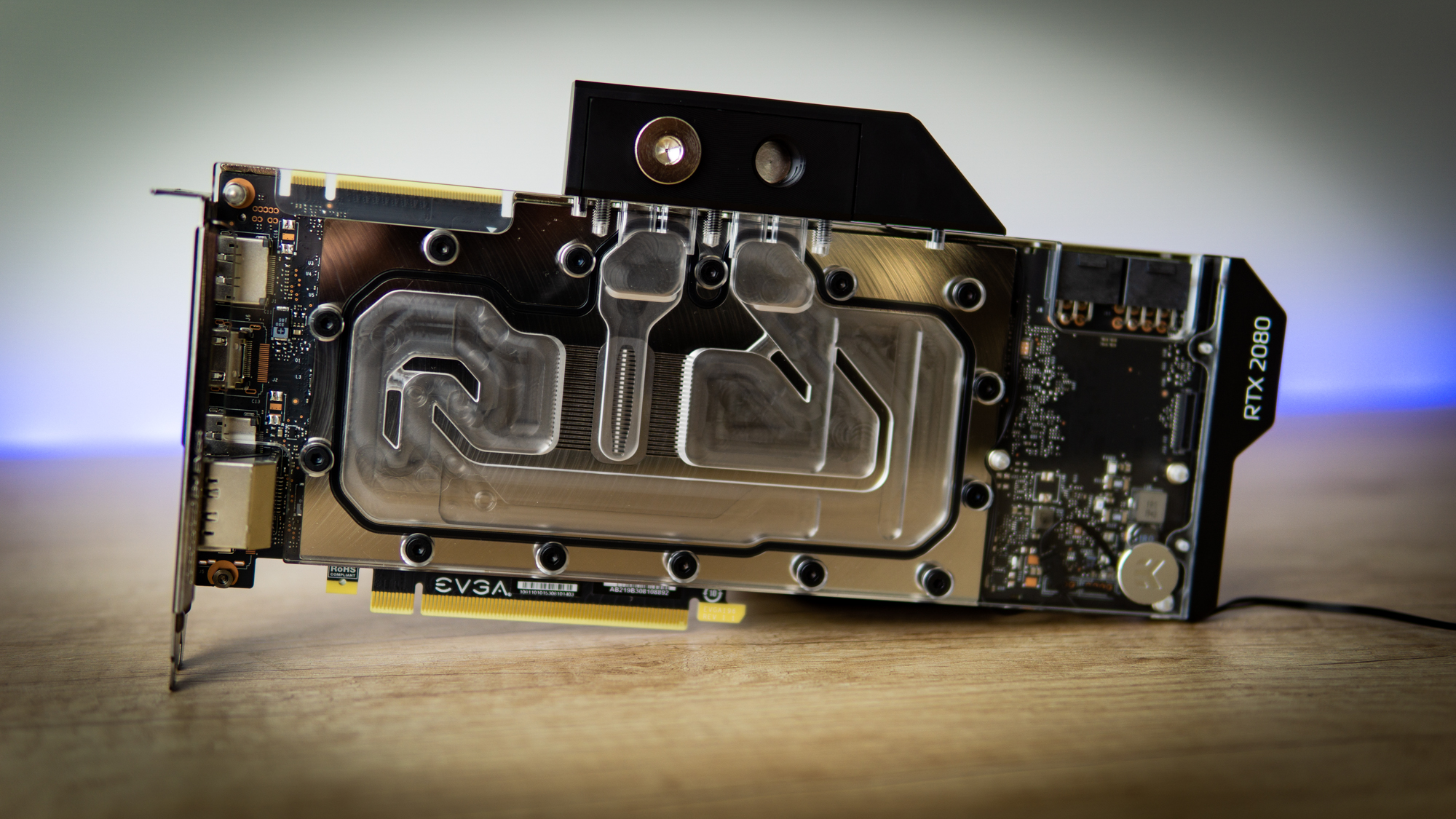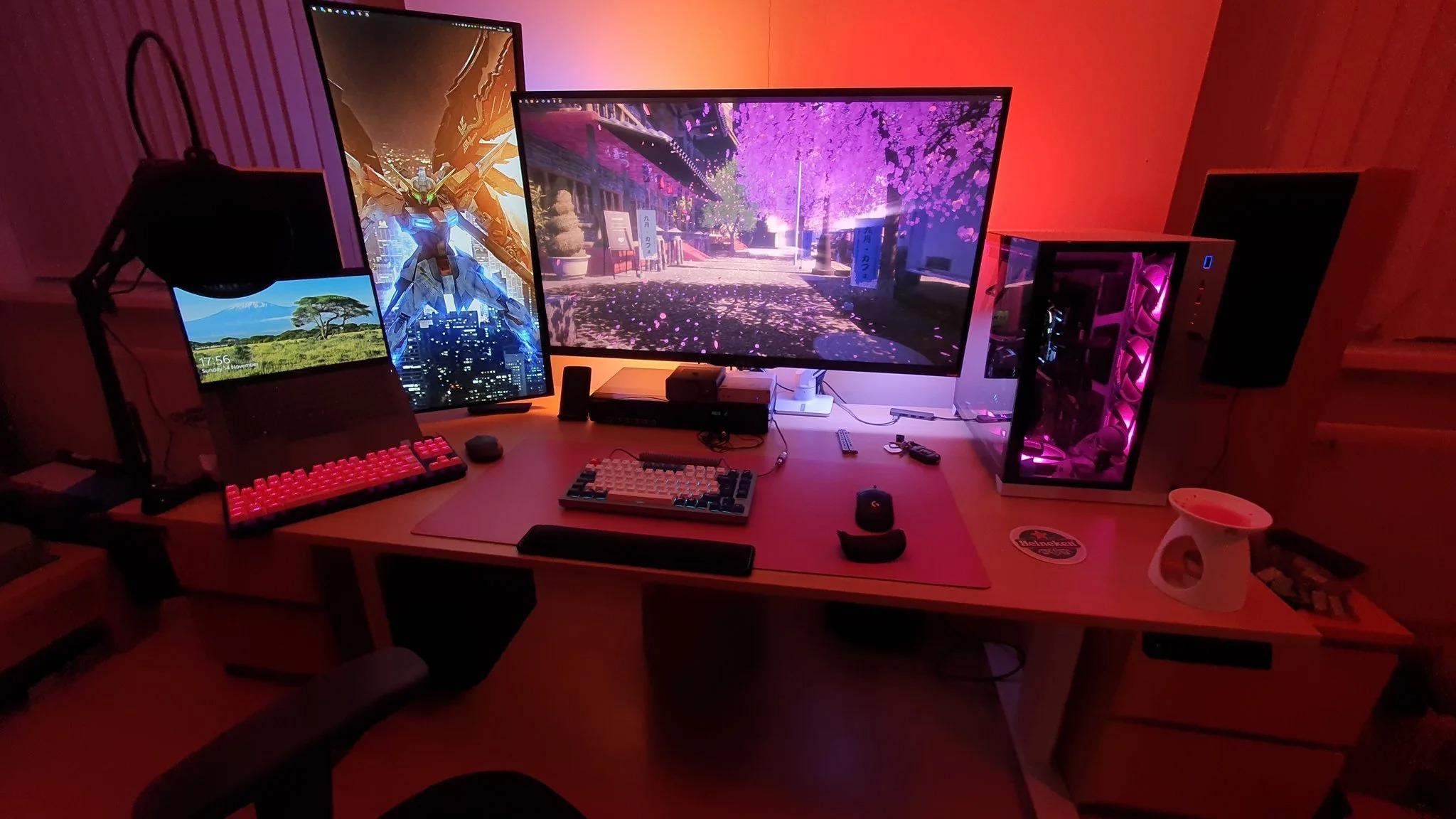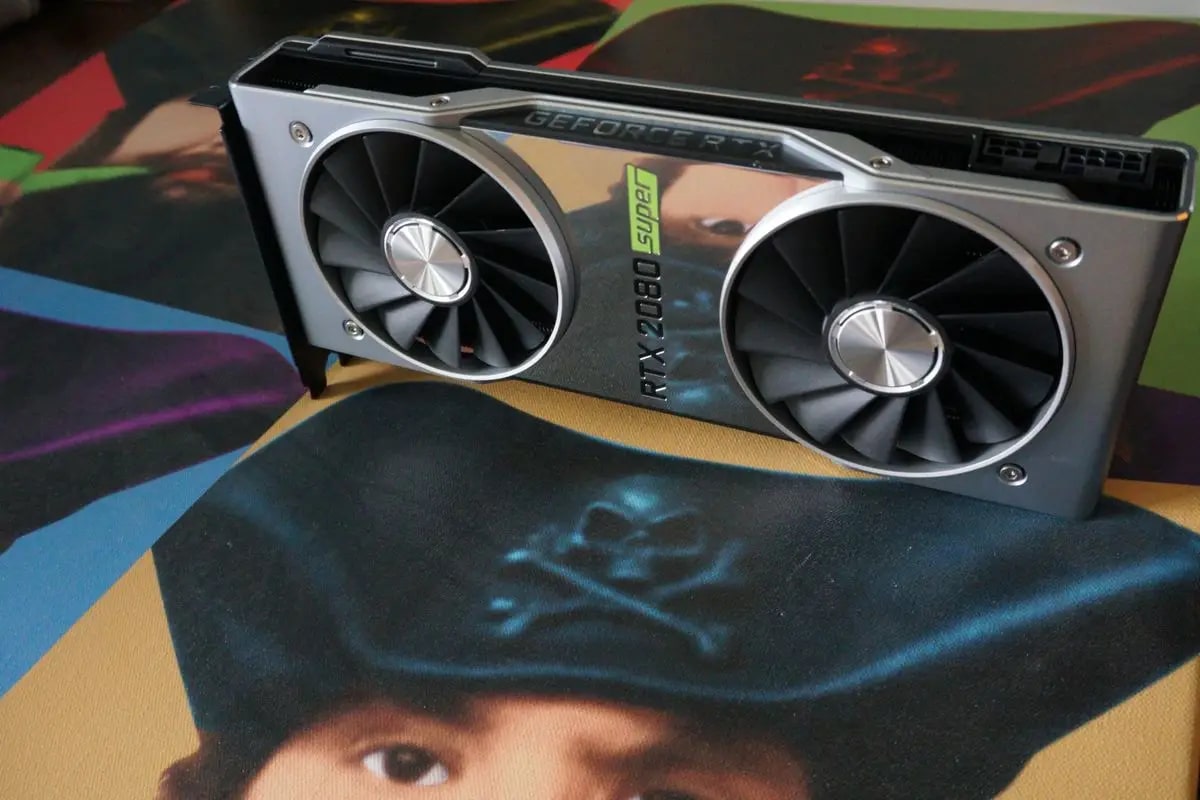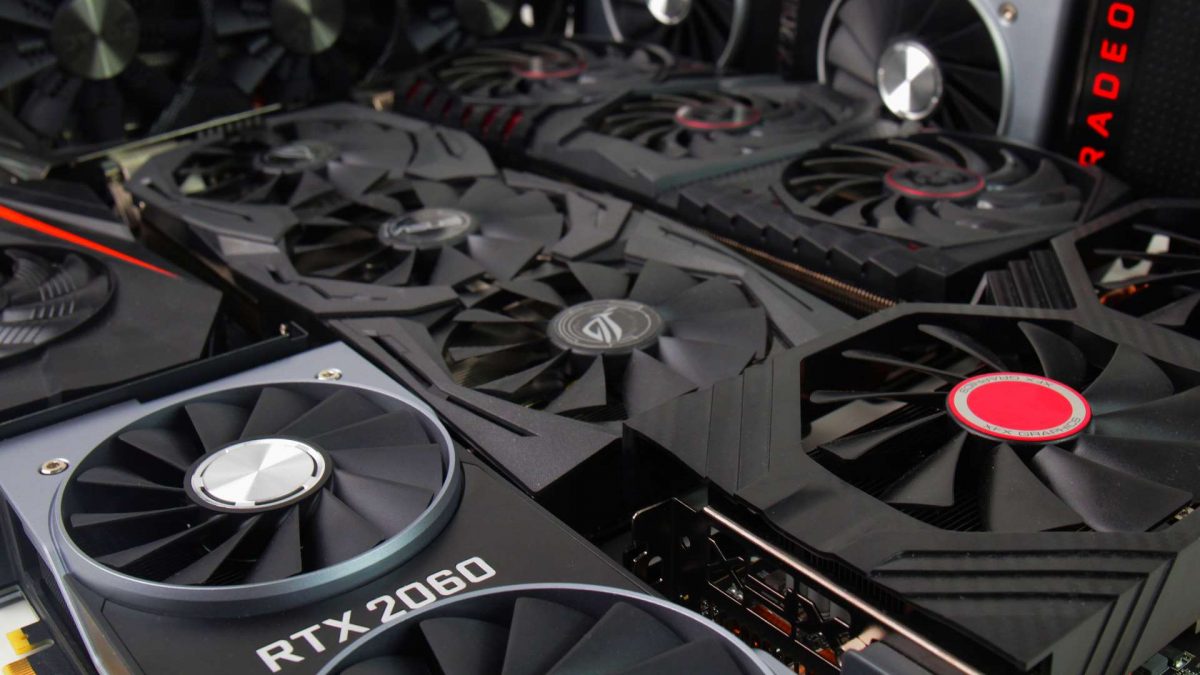Introduction
Graphics cards are an integral component of modern computer systems, powering the visual output and rendering capabilities necessary for an immersive user experience. Whether you’re a gamer, graphic designer, or video editor, having a powerful graphics card is essential for smooth performance and enhanced graphical quality. With the rapid advancement in technology, graphics cards have become more powerful and feature-rich, offering impressive capabilities to handle even the most demanding tasks.
In this article, we will explore the concept of graphics cards and delve into the importance of having a powerful one. We will also discuss the key factors to consider when choosing the most powerful graphics card for your computing needs. Additionally, we will compare the latest graphics cards available in the market and analyze their benchmark tests and performance to determine the top contenders for the most powerful graphics card title.
It is worth noting that the graphics card market is highly competitive and constantly evolving. New models are released regularly, each promising improved performance and cutting-edge features. With so many options to choose from, it can be a daunting task to find the best graphics card that suits your requirements and budget. That’s why we will provide you with a comprehensive overview of the latest graphics cards and their performance, enabling you to make an informed decision when it comes to upgrading your graphics card.
So, whether you’re an avid gamer looking to achieve smoother gameplay and higher frame rates, or a creative professional seeking to unleash the full potential of visualization software, this article will serve as a valuable guide to help you in your quest to find the most powerful graphics card available. So, let’s dive into the world of graphics cards and discover what makes them an essential component of any high-performance computer system.
What is a graphics card?
A graphics card, also known as a video card or GPU (Graphics Processing Unit), is a hardware component that is responsible for rendering images, videos, and animations on a computer’s display. It works in conjunction with the computer’s CPU (Central Processing Unit) to handle the complex calculations required for generating and displaying visual content.
At its core, a graphics card consists of a processor, memory, and various other components that work together to process and display visual information. The processor, or GPU, is the most critical component of a graphics card as it performs the mathematical calculations necessary for rendering graphics. The GPU consists of numerous cores, allowing it to handle multiple tasks simultaneously and provide the necessary computational power for complex rendering processes.
The memory on a graphics card, known as VRAM (Video Random Access Memory), plays a crucial role in storing and providing fast access to the textures, shaders, and other data required for rendering. The amount and speed of VRAM directly impact the performance and capabilities of a graphics card. Higher VRAM capacity and faster memory speeds enable the card to handle larger and more detailed textures, resulting in improved visual quality and smoother performance.
Graphics cards are connected to the motherboard of a computer system through an expansion slot, typically PCI-Express, and they connect to the display through interfaces such as HDMI, DisplayPort, or DVI. This allows the graphics card to send the processed visual data to the monitor for display.
In addition to rendering graphics, modern graphics cards often come equipped with advanced features and technologies. These may include hardware acceleration for video playback, support for multiple monitor setups, and compatibility with virtual reality applications. Some high-end graphics cards also include features like real-time ray tracing, which simulates the behavior of light to create highly realistic graphics.
Overall, a graphics card serves as the powerhouse behind smooth and visually stunning graphics on a computer. Whether you’re gaming, editing videos, or working with graphic-intensive applications, having a high-performance graphics card can significantly enhance your experience by delivering faster rendering times, higher frame rates, and improved visual quality.
Importance of a powerful graphics card
A powerful graphics card is a vital component for those who engage in activities that rely heavily on graphical performance, such as gaming, graphic design, video editing, and 3D modeling. The significance of a powerful graphics card lies in its ability to deliver smooth and visually stunning graphics, enhancing the overall user experience. Let’s explore the importance of having a powerful graphics card in more detail.
1. Gaming Performance: For gamers, a high-performance graphics card is essential to achieve smooth gameplay with high frame rates and realistic visuals. A powerful GPU ensures that the game runs smoothly, without any lag or stuttering, allowing gamers to fully immerse themselves in the virtual world. It also enables the rendering of advanced graphical effects, such as realistic lighting, shadows, and textures, enhancing the overall visual quality of the game.
2. Graphic Design and Video Editing: Graphic designers and video editors rely on powerful graphics cards to handle complex rendering tasks and achieve faster results. Whether it’s manipulating images, rendering 3D models, or editing high-resolution videos, a powerful graphics card significantly reduces the rendering time and provides a smoother workflow. It allows for real-time previews and seamless editing, improving productivity and creativity.
3. 3D Modeling and Animation: Professionals working with 3D modeling and animation software require powerful graphics cards to handle the complexity of their projects. A high-performance GPU ensures smooth navigation, responsive editing, and accurate visual representation of intricate models and animations. It enables the real-time visualization of complex scenes, making it easier to spot errors and make necessary adjustments.
4. Multi-Monitor Setups: Power users who utilize multiple monitors for their work or gaming benefit from a powerful graphics card. It allows for seamless multitasking with smooth transitions between displays, eliminating lag or stuttering. It also enables users to extend their desktops or configure a multi-monitor setup for immersive gaming experiences or increased workspace for productivity tasks.
5. Virtual Reality (VR) Support: Virtual reality applications require significant graphical processing power to deliver immersive and realistic experiences. A powerful graphics card can handle the intensive graphics rendering required for VR, ensuring smooth gameplay and reducing the likelihood of motion sickness. It allows users to explore virtual worlds with stunning visuals and accurate tracking, making the VR experience more enjoyable.
Overall, having a powerful graphics card is imperative for those who demand high-quality visuals and smooth performance in activities like gaming, graphic design, video editing, 3D modeling, and VR. It enables faster rendering times, higher frame rates, improved visual quality, and enhanced productivity, ultimately enhancing the overall user experience in various creative and computing endeavors.
Factors to consider when choosing the most powerful graphics card
When selecting the most powerful graphics card for your needs, several factors come into play. Understanding these factors will help you make an informed decision and ensure optimal performance for your specific requirements. Let’s explore the key considerations when choosing a powerful graphics card.
1. Performance: The performance of a graphics card is arguably the most important factor to consider. Look for the GPU’s core clock speed, number of cores, and memory bandwidth. Higher clock speeds and more cores generally result in better performance. Additionally, consider the VRAM capacity and memory bus width as they impact the card’s ability to handle large textures and high resolutions.
2. Compatibility: Ensure that the graphics card is compatible with your computer’s specifications, including the motherboard and power supply. Check the interface compatibility (e.g., PCIe) and the power requirements of the card to ensure your system can support it. It’s also important to consider the physical size of the card and ensure it fits comfortably in your computer’s case.
3. Cooling and Power Efficiency: Look for graphics cards with efficient cooling mechanisms, such as advanced heatsinks and fans, to keep the GPU temperature low. This helps prevent overheating and ensures optimal performance. Additionally, consider the power consumption of the graphics card and make sure it aligns with your power supply’s capabilities.
4. Budget: Graphics cards come in a wide range of prices, so it’s essential to determine your budget before making a choice. Consider the performance-to-price ratio and choose a card that offers the best value for your budget. Keep in mind that high-end graphics cards tend to be more expensive but offer superior performance.
5. Purpose and Usage: Consider the specific tasks you will be using the graphics card for. If you’re primarily a gamer, look for a card that is optimized for gaming performance and supports the latest gaming technologies. If you’re a content creator or professional with graphic-intensive workloads, prioritize cards that excel in rendering, video editing, and 3D modeling.
6. Future-Proofing: Technology evolves rapidly, and it’s essential to consider future compatibility and longevity when choosing a graphics card. Look for features like support for new APIs (Application Programming Interfaces), updated drivers, and future technologies to ensure your card remains relevant in the years to come.
By considering these factors, you can make an educated decision when selecting the most powerful graphics card that meets your performance needs, budget constraints, and specific usage requirements. Remember to prioritize performance, compatibility, cooling, budget, purpose, and future-proofing to ensure a satisfying and long-lasting investment in a graphics card.
Comparison of the latest graphics cards
The graphics card market is ever-evolving, with new models being released regularly. To help you make an informed decision, we will compare some of the latest graphics cards available in the market. Please note that this is not an exhaustive list and that the performance of graphics cards can vary depending on factors such as price and specific configurations.
1. NVIDIA GeForce RTX 3080: The NVIDIA GeForce RTX 3080 is a high-end graphics card known for its exceptional performance in gaming and other graphic-intensive applications. It features the NVIDIA Ampere architecture, with 8704 CUDA cores and 10GB of GDDR6X VRAM. The RTX 3080 supports real-time ray tracing, DLSS (Deep Learning Super Sampling), and high refresh rate gaming at 4K resolution.
2. AMD Radeon RX 6800 XT: The AMD Radeon RX 6800 XT is another top-tier graphics card that competes with the RTX 3080. It boasts AMD’s RDNA 2 architecture, with 4608 stream processors and 16GB of GDDR6 VRAM. The 6800 XT supports hardware-accelerated ray tracing and AMD’s FidelityFX technologies, delivering impressive performance in both gaming and professional workloads.
3. NVIDIA GeForce RTX 3070: The NVIDIA GeForce RTX 3070 is a high-performance graphics card that offers excellent value for its price. It features the same Ampere architecture as the RTX 3080 but with slightly lower specifications. With 5888 CUDA cores and 8GB of GDDR6 VRAM, the RTX 3070 delivers impressive gaming performance at 1440p resolution and can handle tasks like video editing and 3D modeling effectively.
4. AMD Radeon RX 6700 XT: The AMD Radeon RX 6700 XT is a mid-range graphics card that offers a balance between performance and price. It features the RDNA 2 architecture with 2560 stream processors and 12GB of GDDR6 VRAM. The 6700 XT is optimized for 1440p gaming and offers excellent performance in a wide range of games, making it an attractive option for gamers with moderate budgets.
5. NVIDIA GeForce GTX 1660 Super: The NVIDIA GeForce GTX 1660 Super is a budget-friendly graphics card that provides solid performance for 1080p gaming. It features 1408 CUDA cores and 6GB of GDDR6 VRAM, making it a reliable option for entry-level gamers or those on a tighter budget. The GTX 1660 Super offers good value for its price and can handle popular games at 1080p with satisfactory frame rates.
These are just a few examples of the latest graphics cards available in the market. It’s important to consider your specific requirements, budget constraints, and intended usage scenarios when choosing the graphics card that best suits your needs. Be sure to assess factors such as performance, price, features, and compatibility to make an informed decision and ensure a satisfying gaming or computing experience.
Benchmark tests and performance analysis
Benchmark tests provide an objective measure of the performance of graphics cards, helping users assess their capabilities in real-world scenarios. Let’s delve into the importance of benchmarking and analyze the performance of some of the latest graphics cards.
Benchmark tests involve running specific software or games designed to stress-test graphics cards and measure their performance in various scenarios. These tests evaluate parameters such as frame rate, rendering times, and image quality, providing valuable insights into a card’s capabilities. By comparing the benchmark scores of different cards, users can make informed decisions based on their specific needs and desired performance levels.
When analyzing benchmark results, it’s essential to consider the specific test conditions, such as the resolution, graphics settings, and the software used. Different benchmarks may prioritize different aspects of performance, and scores may vary depending on the workload. Therefore, it’s crucial to select benchmarks that align with your intended usage, whether it’s gaming, graphic design, or video editing.
For gaming performance, widely used benchmarks include 3DMark, Unigine Heaven, and PCMark. These tests simulate real gaming scenarios and provide an overall “score” or frame rate measurements, indicating how well a graphics card can handle popular games at different resolutions and settings. Game-specific benchmarks, such as those for AAA titles like Cyberpunk 2077 or Assassin’s Creed Valhalla, offer insights into how a card performs in specific games.
In recent benchmark tests, the NVIDIA GeForce RTX 3080 consistently showcased excellent performance, delivering high frame rates and superb ray tracing capabilities. The AMD Radeon RX 6800 XT often performed at a similar level, sometimes even surpassing the RTX 3080 in certain games. The RTX 3070 proved to be a formidable contender for 1440p gaming, while the AMD Radeon RX 6700 XT offered solid performance at a more affordable price point. The GTX 1660 Super demonstrated its value as an entry-level option, delivering respectable performance for 1080p gaming.
When analyzing benchmark scores, it’s crucial to consider the price-performance ratio and fit-for-purpose factor. Some cards may offer slightly lower scores but provide better value for money or excel in specific use cases, such as professional applications or multi-monitor setups.
It’s important to note that benchmark tests are just one aspect to consider when choosing a graphics card. User reviews, compatibility with software and hardware, and long-term support should also factor into the decision. Additionally, keep an eye on future driver updates and optimizations that can potentially improve the performance of graphics cards over time.
By analyzing benchmark tests, understanding their limitations, and considering other factors, you can make a well-informed decision when selecting a graphics card that best suits your performance requirements and budget.
Top contenders for the most powerful graphics card title
When it comes to determining the most powerful graphics card, several top contenders stand out in terms of performance, features, and overall value. Let’s take a closer look at some of these leading graphics cards currently vying for the title of the most powerful.
1. NVIDIA GeForce RTX 3090: The NVIDIA GeForce RTX 3090 stands as one of the most powerful consumer-grade graphics cards available. With a massive 10,496 CUDA cores, 24GB of GDDR6X VRAM, and support for real-time ray tracing and DLSS, the RTX 3090 delivers unparalleled gaming and rendering performance. It is particularly noteworthy for its ability to handle 8K gaming and demanding professional workloads.
2. AMD Radeon RX 6900 XT: The AMD Radeon RX 6900 XT competes head-to-head with the RTX 3090 in terms of performance and features. With 5120 stream processors, 16GB of GDDR6 VRAM, support for hardware-accelerated ray tracing, and AMD’s Smart Access Memory technology, the RX 6900 XT offers impressive gaming performance and is optimized for 4K gaming and content creation.
3. NVIDIA GeForce RTX 3080: The NVIDIA GeForce RTX 3080 is another powerhouse GPU that offers exceptional gaming performance and features. With 8704 CUDA cores, 10GB of GDDR6X VRAM, and advanced ray tracing capabilities, the RTX 3080 excels in delivering high frame rates at 1440p and 4K resolutions. It also provides support for DLSS for improved performance in compatible games.
4. AMD Radeon RX 6800 XT: The AMD Radeon RX 6800 XT is a formidable contender to the RTX 3080, offering impressive performance in both gaming and professional workloads. With 4608 stream processors, 16GB of GDDR6 VRAM, and hardware-accelerated ray tracing, the RX 6800 XT delivers excellent 1440p and 4K gaming experiences and provides a strong alternative to NVIDIA’s offerings.
5. NVIDIA GeForce RTX 3070: For those looking for slightly more affordable options without sacrificing too much performance, the NVIDIA GeForce RTX 3070 emerges as a noteworthy choice. With 5888 CUDA cores, 8GB of GDDR6 VRAM, and support for ray tracing, the RTX 3070 offers exceptional value for 1440p gaming and performs admirably in demanding applications.
It’s important to consider factors like price, availability, and compatibility when choosing the most powerful graphics card for your specific needs. Additionally, keep in mind that the “most powerful” title may vary depending on your intended usage, as different cards excel in different scenarios. It’s advisable to research and compare the specifications, features, and benchmarks of each graphics card to ensure it aligns with your requirements and offers the performance you seek.
Ultimately, the top contenders in the race for the most powerful graphics card are constantly evolving as new models are released and technology advances. Staying up to date with the latest releases, reviews, and benchmark tests will help you make an informed decision and select the graphics card that delivers the level of performance and features you desire.
Conclusion
In conclusion, a powerful graphics card plays a crucial role in delivering immersive and visually stunning experiences, whether you’re a gamer, graphic designer, or video editor. By understanding the key factors to consider when choosing a graphics card, such as performance, compatibility, cooling, budget, purpose, and future-proofing, you can make an informed decision that meets your specific needs and requirements.
We explored the importance of a powerful graphics card in enhancing gaming performance, graphic design capabilities, video editing efficiency, 3D modeling accuracy, and virtual reality experiences. Whether you’re seeking smooth gameplay with high frame rates, seamless editing workflows, or realistic virtual environments, a powerful graphics card provides the raw computational power required.
Furthermore, we discussed the significance of benchmark tests and performance analysis in evaluating the capabilities of graphics cards. By examining benchmark scores and analyzing real-world performance, users can determine which graphics card offers the best performance-to-price ratio for their intended usage.
Finally, we highlighted some of the top contenders for the title of the most powerful graphics card, including the NVIDIA GeForce RTX 3090, AMD Radeon RX 6900 XT, NVIDIA GeForce RTX 3080, AMD Radeon RX 6800 XT, and NVIDIA GeForce RTX 3070. Each of these graphics cards offers exceptional performance and features, allowing users to choose based on their specific requirements and budget.
Ultimately, selecting the most powerful graphics card is a personal decision that depends on your needs, preferences, and budget. By considering the factors we discussed and conducting thorough research, you can invest in a graphics card that provides the performance and capabilities necessary to enhance your computing experience, whether it’s for gaming, creative work, or professional applications.







